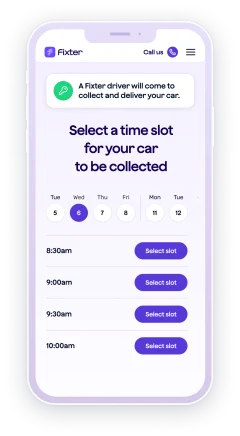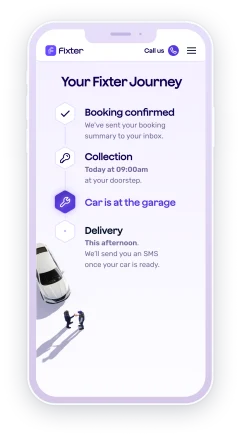Few things can be as frustrating as pressing that button only to find your car's power windows refusing to budge. Whether you're stuck on a rainy day with a window that won't roll up or you're simply in need of some fresh air but can't roll it down, malfunctioning windows can be a real nuisance. Before you rush to the mechanic, it's worth knowing that many power window issues can be tackled with a bit of know-how and some basic tools. This guide will walk you through the steps to diagnose and fix common problems, making you feel more in control and less at the mercy of costly repairs. Let's get started on getting your car's electric windows back in working order.
Understanding Power Windows
Understanding how power windows function is crucial when trying to diagnose and fix power window problems. This section will guide you through the basic operation of power windows, common causes of failure, and how to identify specific issues.
How Power Windows Operate
Power windows are operated by an electric motor that controls the movement of the window glass. When you the window button or press the window switch, the motor activates, driving the window up or down. This motor is connected to a regulator inside the door panel.
The motor gets its power from your car's battery, and the car's electrical system and movement is guided by tracks that ensure smooth operation. If any of these components fail, the windows can become stuck.
Familiarising yourself with these components helps when diagnosing issues. For a more technical overview, the AutoZone website offers detailed guides on power window systems.

Common Causes of Failure
Power windows can fail due to various reasons. A common issue is a blown fuse, which interrupts the electrical flow passenger side window. Another frequent problem is a faulty window switch that doesn’t properly communicate with the motor.
Window motors can also burn out over time, especially with frequent use of electric windows. This stops the window from moving altogether.
Additionally, the tracks can become misaligned or obstructed by debris, preventing smooth operation. Understanding these causes can help you pinpoint where the problem lies. For comprehensive troubleshooting tips, WikiHow offers practical advice.
Identifying Window Issues
Identifying window issues early can save time and money. First, observe any changes in the window's operation, such as unusual noises or sluggish movement. These symptoms often indicate mechanical wear or electrical faults.
Checking the power window switch for responsiveness is another step. If the switch feels loose or unresponsive, it might need repair.
Listen for any motor sounds when pressing the switch. No sound could mean a motor issue, while a clicking noise might suggest a power supply problem. For more ways to identify issues, CarTalk provides helpful insights.
Preparing for the Repair
Before diving into repairs, it's essential to prepare adequately. This section will cover the tools you'll need, safety measures, and organising your workspace for an efficient repair process.
Gathering Necessary Tools
To fix power window issues, you'll need some basic tools. A multimeter is essential for checking electrical connections. Screwdrivers, both flathead and Phillips, are necessary for removing door panels.
Pliers can be useful for gripping and manipulating small parts, while a socket set will help with any bolts or nuts. Additionally, having a repair manual specific to your car model is beneficial.
Ensure all tools are in working condition. A well-prepared toolkit ensures smoother repairs. You can find recommended toolkits and reviews on Amazon.
Ensuring Your Safety
Safety is paramount when working on car repairs. First, disconnect the car battery to prevent accidental electric shocks. Ensure the car is parked on a level surface and the parking brake is engaged.
Wear safety gloves and goggles to protect against sharp edges and debris. This is particularly important when working with glass.
Always keep a clear mind and work in a well-lit environment. Avoid distractions, and if you're unsure about any step, consult a professional or a detailed guide like those on AutoZone.
Organising Your Workspace
A well-organised workspace can make a significant difference in the repair process. Start by clearing the area around your car for easy movement. Lay down a cloth or mat to protect the car’s paint and catch any falling screws.
Arrange your tools within reach and group similar items together. This reduces time spent searching for the right tool mid-repair.
Ensure you have adequate lighting to see small parts clearly. For further tips on setting up a repair-friendly environment, check WikiHow.
Diagnosing the Problem
Diagnosing the exact problem with your power windows requires a systematic approach. This section will guide you through inspecting the fuse box, checking the window switch, and examining the window motor.
Inspecting the Fuse Box
The fuse box is a common culprit in power window failures. Locate your car’s fuse box, usually found under the dashboard or in the engine compartment. Refer to your car’s manual for the specific location.
Inspect the power window fuse for any signs of damage, like a broken wire or discolouration. A blown fuse will need replacement.
Use a multimeter to test the fuse's continuity. This ensures the fuse is conducting electricity properly. For detailed guidance on using a multimeter, visit CarTalk.
Checking the Window Switch
A malfunctioning window switch can prevent car windows from operating. First, remove the switch panel from the door by unscrewing it with a screwdriver.
Check electrical wiring for any visible damage or loose connections. These are often the culprits behind an unresponsive switch.
Test the switch with a multimeter to ensure it’s sending the correct voltage to the motor. If faulty, consider replacing it with guidance from WikiHow.
Examining the Window Motor
The window motor is a critical component. Access the motor by removing the door panel. This may require unscrewing door latch and gently prying it off.
Listen for the motor when the switch is pressed. No sound might indicate a dead motor, while clicking could suggest a power issue.
Use a multimeter to test if the motor is receiving power. If it isn’t, further inspection of the wiring might be necessary. For more detailed diagnostics, explore guides on AutoZone.
Fixing Common Issues
Once you've diagnosed the problem, addressing common power window issues is straightforward with the right steps. This section will cover replacing a blown fuse, repairing or replacing the switch, and restoring the window motor.
Replacing a Blown Fuse
Replacing a blown fuse is often a simple fix. 1. Locate the appropriate replacement fuse, ensuring it matches the amperage of the original. Your car’s manual should provide this information.
Carefully remove the blown fuse using a fuse puller or needle-nose pliers.
Insert the new fuse into the slot, ensuring it is snugly in place. Test the window operation afterwards to ensure success.
For visual guidance, WikiHow offers a step-by-step tutorial on fuse replacement.
Repairing or Replacing the Switch
If the switch is faulty, consider repairing or replacing it. 1. Remove the damaged switch from the interior door panel itself.
Inspect the wiring for any loose or broken connections. Repair any broken wires by reconnecting them securely.
If the switch is beyond repair, replace it with a new one. Ensure compatibility with your car model.
Following these steps can restore window functionality. For detailed procedures, visit AutoZone.
Restoring the Window Motor
Restoring a window motor can be more complex. 1. Remove the door panel and side windows to access the motor.
Test the motor with a multimeter to confirm it’s receiving power but not functioning.
If faulty, replace the motor with a suitable replacement for your car model. Reassemble the door panel and test the window operation.
For comprehensive restoration instructions, CarTalk provides in-depth guidance.
Preventative Maintenance Tips
Maintaining your power windows can prevent future issues. This section will offer tips on regular window checks, lubricating window tracks, and addressing problems early.
Regular Window Checks
Regular checks can keep your power windows in top condition. Inspect all the windows for smooth operation every few months.
Listen for unusual noises or sluggish movement, which might indicate developing issues. Early detection can prevent major failures.
Performing these checks can save time and money in the long run. For a checklist on regular car maintenance, WikiHow offers practical advice.
Lubricating Window Tracks
Lubricating window tracks ensures smooth operation. 1. Clean the driver's door tracks to remove dirt and debris.
Apply a suitable lubricant, such as silicone spray, along the tracks. This reduces friction and wear on the motor.
Regular lubrication can extend the life of your car door power windows. For recommended products, check Amazon.
Addressing Issues Early
Addressing issues early can prevent costly repairs. If you notice any irregularities in window operation, investigate promptly.
Consult a professional if needed, to avoid further damage. Ignoring problems can lead to more significant and expensive repairs.
For more on spotting early car issues, visit CarTalk.
These steps and preventive measures should help you handle most power window issues confidently. With the right tools and knowledge, you can save time and avoid unnecessary trips to the mechanic.









